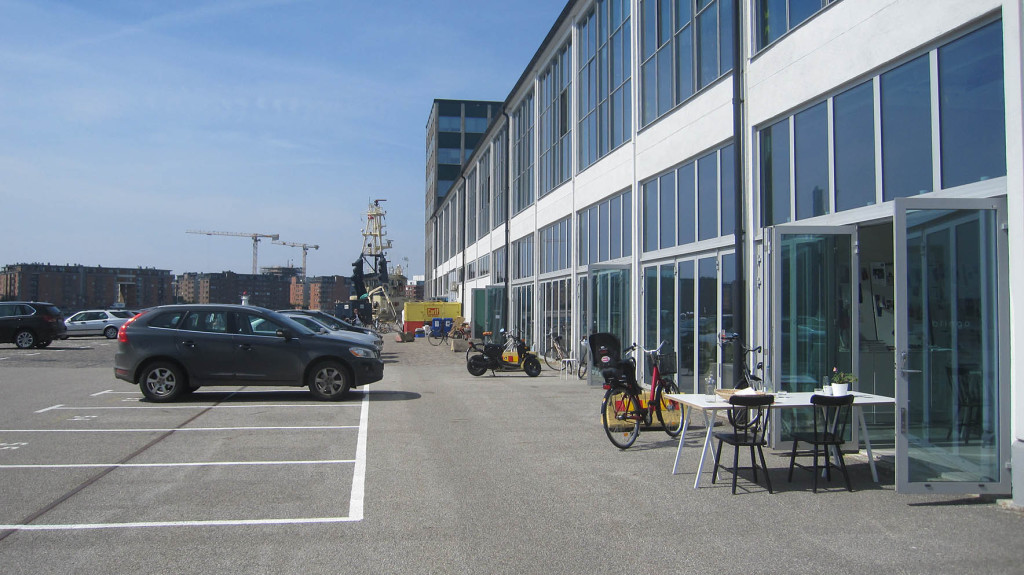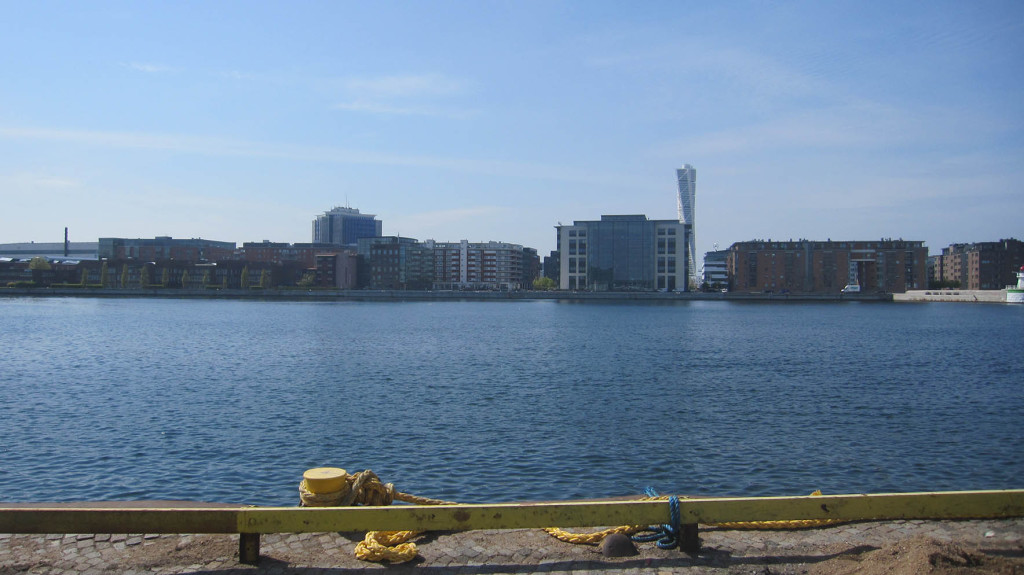This column aims at discovering harbours from a landscape perspective, which means extending our view beyond the delimited harbour area towards the surrounding landscape of which the harbour is a constitutive part – surrounding landscape means physical landscape in the first place, but also landscape in the figurative sense, such as landscapes of migration, and also landscapes of economy. In the last column (PORTUS 30), we have looked at the massively emerging landscapes of migration in Europe these days, for which harbour cities in the South have played a central role as transit facilitators for refugees on their way northwards. In this column, we want to observe the resulting tendencies in northern European cities, often also harbour cities. Here, large numbers of refugees seek asylum, and eventually aim to settle down, at least for a while, which faces these cities with an increased need of providing dwellings, infrastructure, education, and integration, but nobody knows for how long, and what socio-economic developments will drive them. In short: the task is to create new urban districts in days of radical uncertainty.
This uncertainty does not necessarily need to be negative, claims Marten Hajer, who held until very recently the position of director of the Dutch Environmental Assessment Agency, is now professor of Urban Futures at the University of Utrecht and the curator of this year’s International Architecture Biennial Rotterdam, entitled ‘The Next Economy’. He puts forward that urban planning has been near-sighted during the last decades, favouring the development of an ever more speculative real estate economy, making money on offices, shopping malls, luxury dwellings – a neo-liberal extractive economic model that has allowed global economic players to deplete cities of resources, backing out of democratic decision-making processes and legally residing in which ever city or country imposes the lowest taxes. ‘The city as a place of social commitment and involvement has lost out to the power of elusive financial flows’, writes Hajer in his curator’s statement, ‘still, the city may be the source of the solution (to this problem). Its quality lies in its urbanity (…) which produces new ideas, via cross-fertilization, through the unexpected’. The core site for this to happen is the public space, physical and virtual, as the foundation for a new public domain to arise and spark off the Next Economy, which, for Hajer, focuses on transformation towards a circular, reciprocal economy, ‘one that does not just take, but also gives and is an organic part of a vital public domain’. Economists today formulate alternatives to the extractive economic model, and identify other values than cash flow generation alone: flexibility, diversity, identity, proximity can become new economic drivers, and they are to be found first and foremost in cities.
Urban activities have already emerged at Nyhamnen, such as architecture and other offices, art galleries, a restaurant of new Nordic cuisine. (Photo: Lisa Diedrich)
Harbour cities present a prime location to imagine the spatial framework for this transition, and the early years of the 21st century present the last chance for them to develop one of their urban resources, namely large centrally located tracts of urban industrial land, left behind by moving port industry. Many of them have been redeveloped in the past 30 years, according to the speculative real estate economy, erasing most of what was found in place, be it material (f.ex. premises) or immaterial (f.ex. activities), thus wasting enormous amounts of resources. Still, some derelict harbour areas are left, some extremely centrally located, as Nyhamnen in the Swedish city of Malmö, a prime place of arrival of refugees, a prime landscape of migration. Why wouldn’t places like Nyhamnen become emerging landscapes of the Next Economy, resource-saving, environment-friendly, democracy-oriented? If not now, the game will be over for the city, having sold their last prime locations to business as usual, lost their best spaces for alternative urban ideas, and contradicted their claims of social sustainability.
Nyhamnen is the next harbour transformation district after the West Harbour, where Calatrava’s Turning Torso dominates the skyline. (Photo: Lisa Diedrich)
Nyhamnen in Malmö exemplifies well the battle between business as usual and emerging ideas. This derelict harbour area, located in direct neibhourhood to the city centre and the central station, is the next to be redeveloped, after the West Harbour, famous for its sustainability approaches of the 2000’s, criticized for not addressing social sustainability though. In late 2015, a parallel commission brought about urban design proposals for Nyhamnen, ranging from architectural business as usual to emerging ideas of a Next Economy. The city, so far, is overwhelmed and hasn’t taken any decision. The task is heavy: transform Nyhamnen into a new urban district in days of radical uncertainty, while assuring social sustainability in the first place, as Malmö widely promotes. The city could become a frontrunner. We are waiting for a forward looking decision!
References
Head image: Nyhamnen in Malmö, still active in shipping agricultural produce, will undergo redevelopment as a central urban district. (Photo: Lisa Diedrich)

